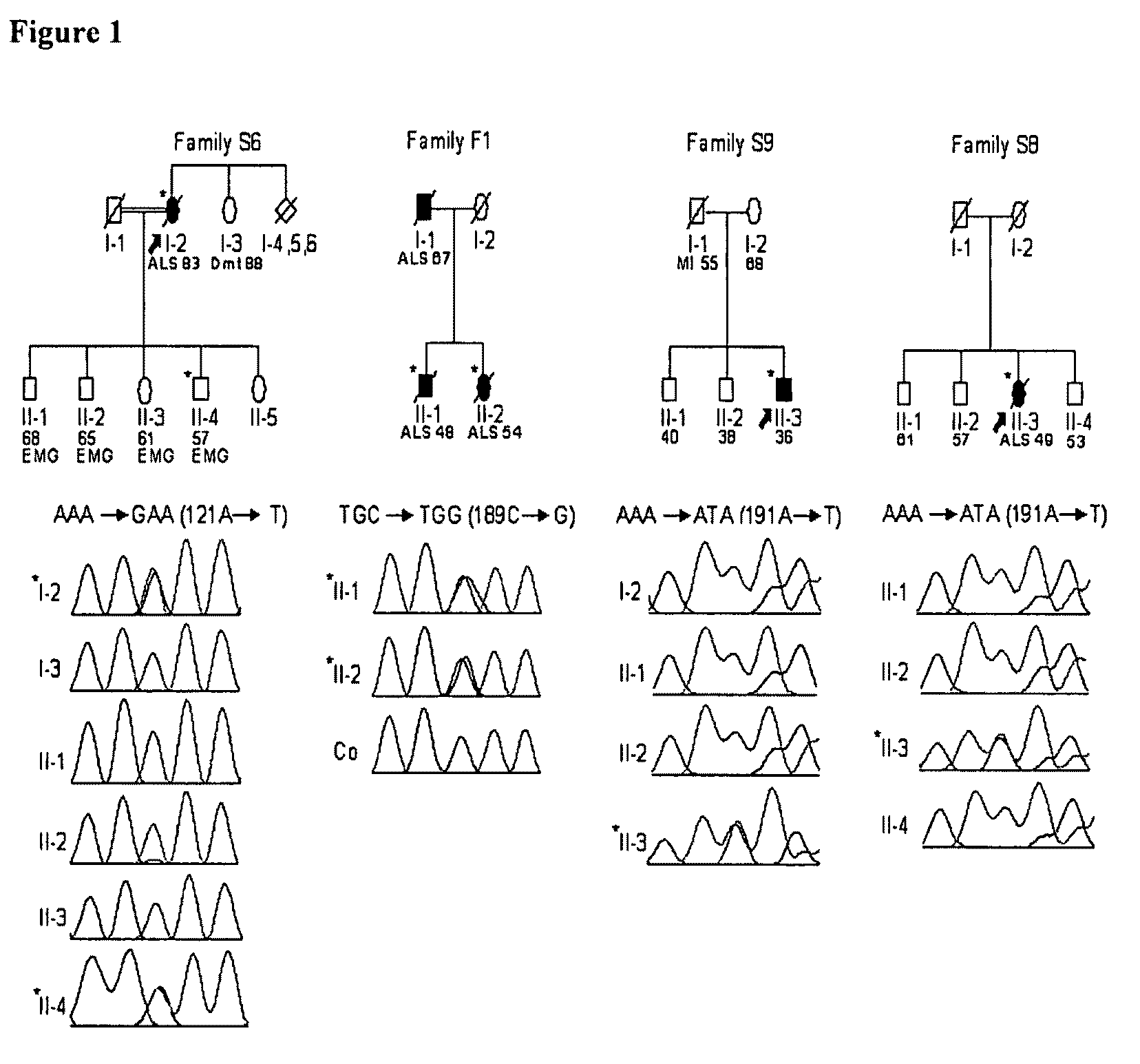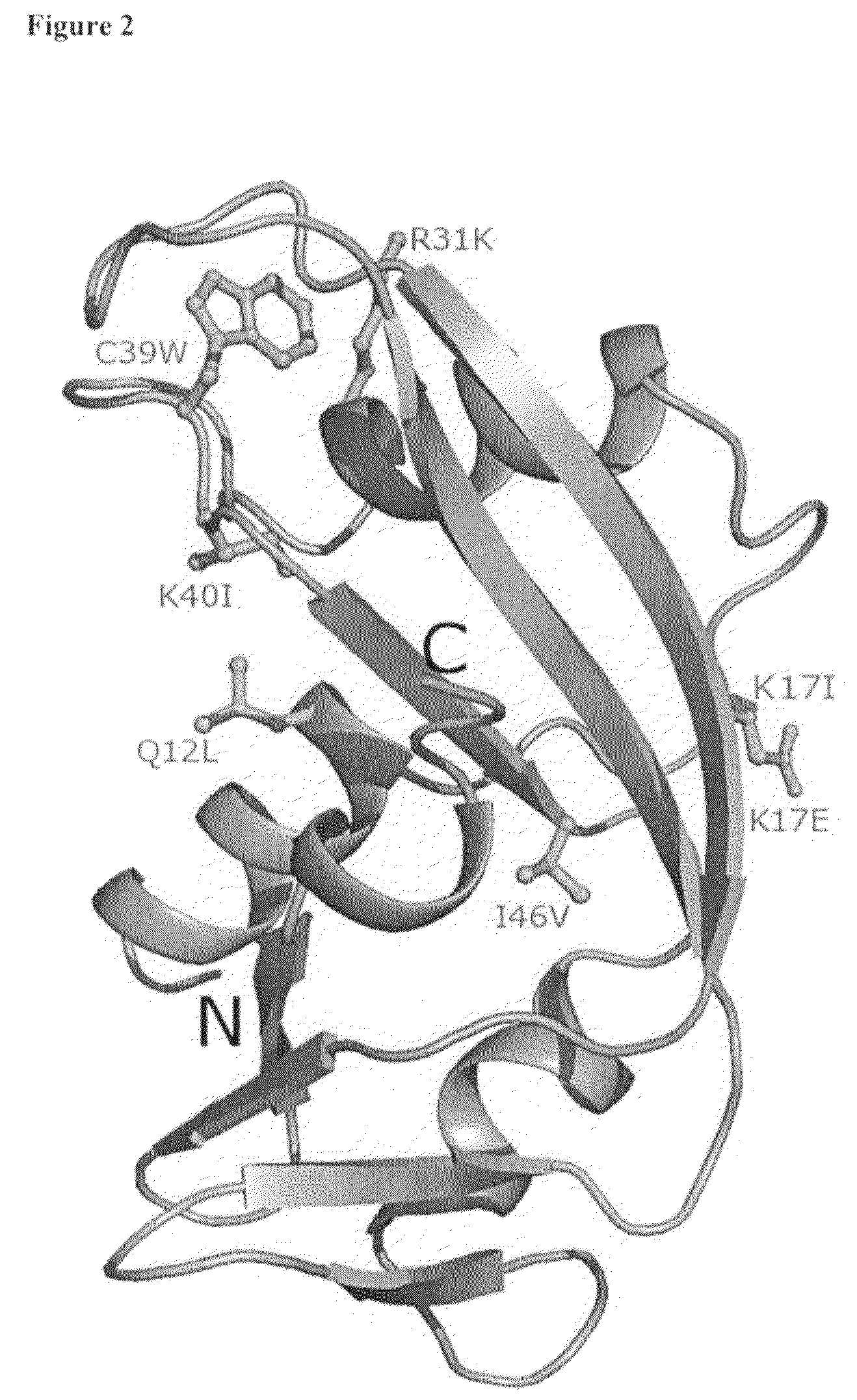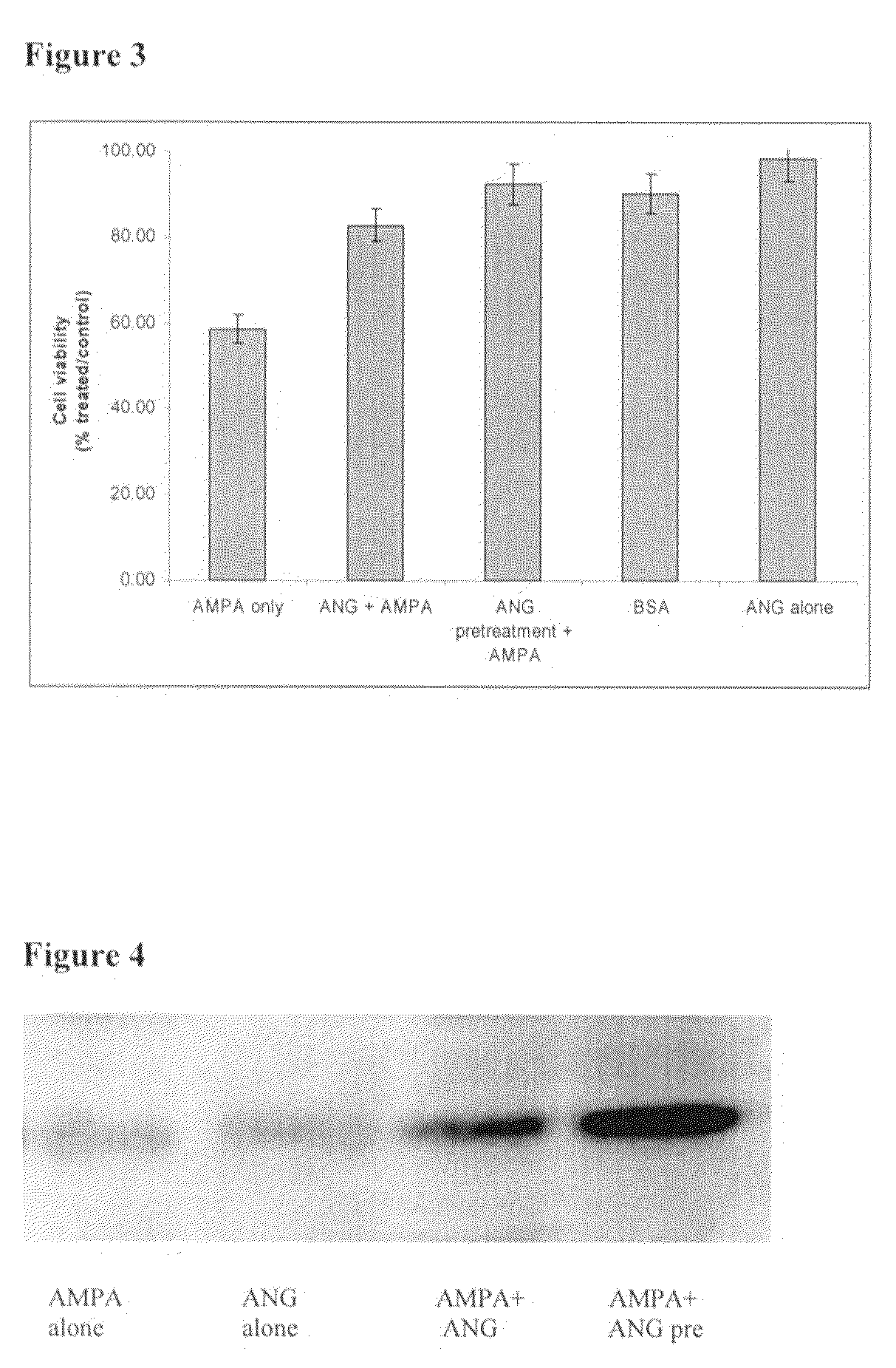Treatment of ALS and variants thereof consisting of primary lateral sclerosis (PLS) or spinal muscular atrophy (SMA)
a technology of primary lateral sclerosis and variants, applied in the direction of angiogenin, drug compositions, peptides, etc., can solve the problem of lowering serum vegf levels
- Summary
- Abstract
- Description
- Claims
- Application Information
AI Technical Summary
Benefits of technology
Problems solved by technology
Method used
Image
Examples
example 1
Genotyping Data
[0067]The Applicant has previously identified chromosome 14q11.2 as a candidate region for amyotrophic lateral sclerosis in the Irish and Scottish populations (Greenway, M. J. et al. Neurology. 63, 1936-1938 (2004) Hayward, C. et al Neurology. 52, 1899-901 (1999)) and have reported an association of ALS with the rs11701 single nucleotide polymorphism (SNP) in the Irish ALS population (Greenway, M. J. et al. Neurology). Genotyping of the rs11701 SNP in 1629 individuals with ALS and 1264 controls from 5 independent populations (Table 2) confirmed the association in the Irish and Scottish ALS populations, although no association was observed in US, English or Swedish populations. The rs11701 SNP is a synonymous substitution in ANG, a one exon gene whose product is expressed in motor neurons, and is an angiogenic factor with RNase A activity.
[0068]Sequencing of the human angiogenin gene (hereafter ANG) in the same populations identified 7 missense mutations in 15 individu...
example 2
Cell Model of Motoneuron Degeneration
Methods
[0076]Primary motoneuron cultures at 7 days in-vitro were exposed to 50 uM AMPA (Tocris Cookson) in the culture medium for 24 hrs, as an in-vitro model of motoneuron degeneration (Kieran and Greensmith, Neuroscience 2004, Vol. 125:427-439). To examine the possible neuroprotective effect of angiogenin we examined the effect of i) pre-treatment and ii) co-treatment with angiogenin (R&D Systems) in the culture medium at concentrations of 25 ng / ml, 50 ng / ml, 100 ng / ml, 200 ng / ml and 500 ng / ml. As controls, sister cultures were used that were either unexposed, or exposed to angiogenin (at same concentrations as detailed above), or exposed to BSA (bovine serum albumin, Sigma).
[0077]In this study an MTT cell viability assay was performed. MTT (Sigma) dissolved in PBS (5 mg / ml) and diluted 1:10 in culture medium was added to cultures and incubated for 4 hours at 37 C. After incubation, the media was replaced with isopropanol containing 0.04 M HCl....
example 3
Animal Model of Neurodegeneration
Treatment Regimes:
[0081]Angiogenin (ang) (R&D Systems Inc., Minneapolis, USA—Catalog Number 265-AN-250) was administered to mutant SOD1 (mSOD1, SOD1G93A) mice, a mouse model of ALS / MND (Gurney et al., 1994 Science 264:1772-5). These mice may be obtained from The Jackson Laboratory, Maine, USA. These mice develop an ALS-like phenotype of progressive motoneuron degeneration and hindlimb paralysis, which very closely mimics the clinical situation. The disease progresses rapidly in these mice, and they have a much reduced lifespan of approximately 125 days (Kieran et al., Nat Med, 10:402-5, 2004). The effect of commencing ang treatment at different disease stages is examined. These stages are i) pre-symptomatically (from 35-days), ii) early-symptomatic stage (from 70-days) or iii) late-symptomatic stage (from 90-days; this point most closely mimics the clinical situation as patients only see neurologist at mid-late stage i.e. when paralysis is evident). ...
PUM
| Property | Measurement | Unit |
|---|---|---|
| concentrations | aaaaa | aaaaa |
| concentrations | aaaaa | aaaaa |
| concentrations | aaaaa | aaaaa |
Abstract
Description
Claims
Application Information
 Login to View More
Login to View More - R&D
- Intellectual Property
- Life Sciences
- Materials
- Tech Scout
- Unparalleled Data Quality
- Higher Quality Content
- 60% Fewer Hallucinations
Browse by: Latest US Patents, China's latest patents, Technical Efficacy Thesaurus, Application Domain, Technology Topic, Popular Technical Reports.
© 2025 PatSnap. All rights reserved.Legal|Privacy policy|Modern Slavery Act Transparency Statement|Sitemap|About US| Contact US: help@patsnap.com



